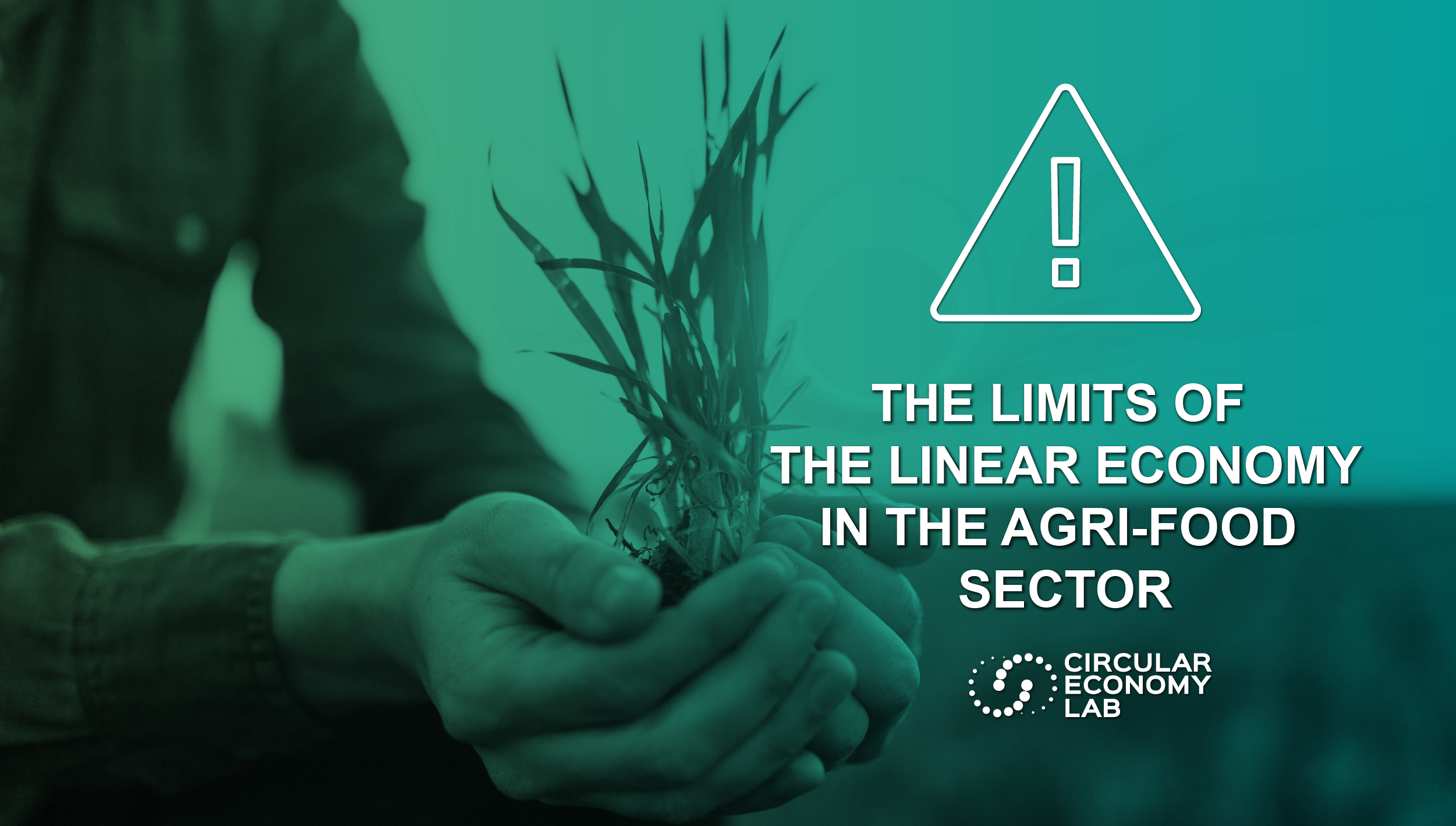
The limits of the linear economy in the agri-food sector
The global food production system is now under unprecedented pressure. In fact, it is estimated that 50% of food production is at risk due to actual climate change, with the consequent inability to satisfy a growing demand resulting from the expansion of the world population.
The main challenge of the sector, however, is not so much to increase production as to improve the way food is produced, to ensure better food management and traceability, reduce waste, streamline the supply chain and promote sustainability.
The environmental and social impacts of the food production system
Globally, the agri-food industry is one of the pillars of the world economy and industry, generating an added value of 3.4 trillion dollars and occupying about 27% of the planet’s population. It is currently primarily responsible for the factors causing climate change, almost a quarter of global greenhouse gas emissions, the degradation of the very natural resources on which it depends, and air, water and soil pollution. At the same time, agri-food also suffers the greatest negative consequences from these changes.
The food production sector is based on an articulated chain that involves a multiplicity of actors and activities that generate extensive environmental and social impacts. Agriculture is responsible for 70% of global water withdrawal and is the largest source of fresh water consumption and water pollution.
Food production causes 80% of global deforestation, while activities such as livestock and industrial agriculture have degraded 75% of the world’s soil and polluted the land as a result of the intensive use of pesticides. The use of chemicals also extends to the processing stages of food products, like preservatives to avoid losses due to rotting, additives, artificial colours and artificial flavors.
Food packaging and distribution are another critical factor: the extensive use of pack and single-use packaging, typically in fossil or polylaminated materials, and the current difficulties in increasing the recycling rates of materials are among the main causes of waste production both industrial and domestic level.
The combination of these intensive and invasive activities is therefore producing a drastic reduction in environmental biodiversity, both animal and vegetal. The current linear model in the agri-food sector therefore presents numerous inefficiencies along the entire chain, while the system of prevention and recovery of waste requires a substantial improvement to reduce economic waste and the production/reuse of waste.
Food surpluses and inefficiencies of the waste prevention and recovery system
At European level, it is important to point out that the amount of waste produced by the agri-food industry is just under 400 million tonnes per year. In Italy food surpluses amount to about 5.6 million, equivalent to 24.5 billion euros and corresponding to 24.5 million tons of carbon released into the atmosphere. The most important waste category is animal and plant waste (87 million tons), followed by waste paper, glass and metal. However, the quantities of waste from the various production chains in the agricultural sector can only be assessed marginally, as waste is often reused as a co-product or left in the field.
According to the World Economic Forum 2020, food waste costs the global economy 940 billion dollars a year and emits 8% of greenhouse gases, and according to FAO (United Nations Food and Agriculture Organization) one third of all food products in the world (1.3 billion edible tons) are lost or wasted every year along the entire supply chain, for a value of 2,600 billion dollars.
In Italy, the system of prevention and recovery of food waste has areas of inefficiency. In 2020, food waste in Italy has registered a contraction due to the pandemic emergency, but waste is still high: about 27 kg of food per capita become waste, 11.78% less (3.6 kg) than in 2019. Overall, 5.2 million tonnes of food from both domestic consumption and the food chain have been wasted, with an estimated economic value of about € 9.7 billion (of which over € 3.2 billion is waste in the field and waste in processing, trade and distribution).
Finally, among the main problems facing the agri-food chain is the weakness of supply chains, a weakness that has been aggravated by the Covid-19 crisis and the resulting restrictions. Even before the pandemic, the supply chain suffered from problems such as lack of traceability, inability to maintain a level of safety and quality of products, inadequate communication between the parties, increased supply chain costs, failure to detect and control inventory in warehouses and stores.
The need for active involvement of all stakeholders
The problems highlighted require an active involvement and the contribution of all stakeholders: the legislator in encouraging and regulating more sustainable behaviour, consumers in changing their habits towards a greater awareness of their behavior, the industrial sector in creating innovative and profitable business models in the long term according to emerging regulatory indications and the evolution of demand. Only a chain of these factors can bring lasting results that guarantee prosperity and well-being, without compromising the future of the planet.